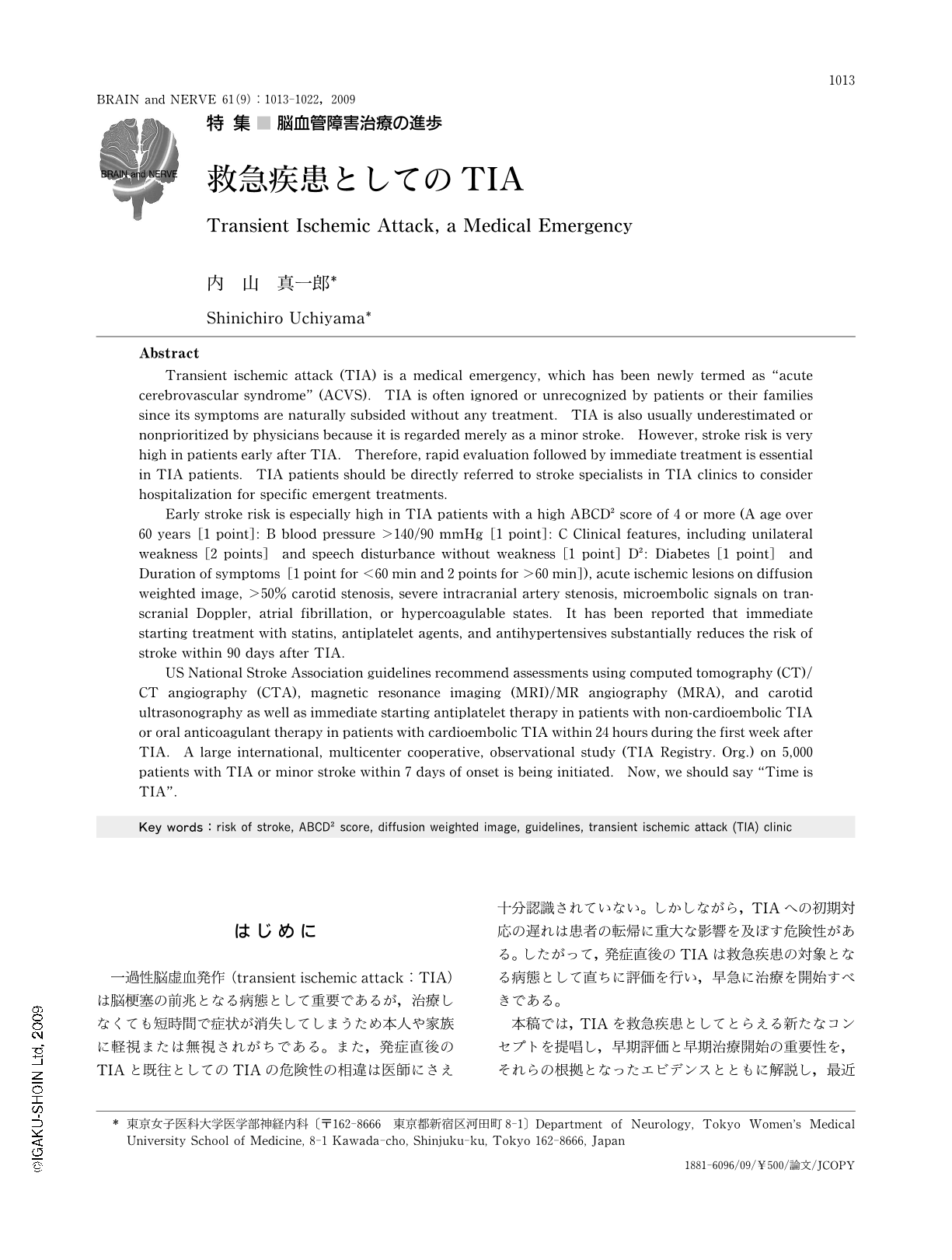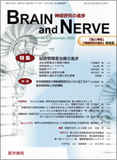Japanese
English
- 有料閲覧
- Abstract 文献概要
- 1ページ目 Look Inside
- 参考文献 Reference
はじめに
一過性脳虚血発作(transient ischemic attack:TIA)は脳梗塞の前兆となる病態として重要であるが,治療しなくても短時間で症状が消失してしまうため本人や家族に軽視または無視されがちである。また,発症直後のTIAと既往としてのTIAの危険性の相違は医師にさえ十分認識されていない。しかしながら,TIAへの初期対応の遅れは患者の転帰に重大な影響を及ぼす危険性がある。したがって,発症直後のTIAは救急疾患の対象となる病態として直ちに評価を行い,早急に治療を開始すべきである。
本稿では,TIAを救急疾患としてとらえる新たなコンセプトを提唱し,早期評価と早期治療開始の重要性を,それらの根拠となったエビデンスとともに解説し,最近発表されたガイドラインの推奨内容と,筆者が関与している大規模な国際共同研究の概要を紹介する。
Abstract
Transient ischemic attack (TIA) is a medical emergency, which has been newly termed as "acute cerebrovascular syndrome" (ACVS). TIA is often ignored or unrecognized by patients or their families since its symptoms are naturally subsided without any treatment. TIA is also usually underestimated or nonprioritized by physicians because it is regarded merely as a minor stroke. However, stroke risk is very high in patients early after TIA. Therefore, rapid evaluation followed by immediate treatment is essential in TIA patients. TIA patients should be directly referred to stroke specialists in TIA clinics to consider hospitalization for specific emergent treatments.
Early stroke risk is especially high in TIA patients with a high ABCD2 score of 4 or more (A age over 60 years[1 point]: B blood pressure >140/90 mmHg[1 point]: C Clinical features, including unilateral weakness[2 points] and speech disturbance without weakness[1 point] D2: Diabetes[1 point] and Duration of symptoms[1 point for <60 min and 2 points for >60 min]), acute ischemic lesions on diffusion weighted image, >50% carotid stenosis, severe intracranial artery stenosis, microembolic signals on transcranial Doppler, atrial fibrillation, or hypercoagulable states. It has been reported that immediate starting treatment with statins, antiplatelet agents, and antihypertensives substantially reduces the risk of stroke within 90 days after TIA.
US National Stroke Association guidelines recommend assessments using computed tomography (CT)/CT angiography (CTA),magnetic resonance imaging (MRI)/MR angiography (MRA),and carotid ultrasonography as well as immediate starting antiplatelet therapy in patients with non-cardioembolic TIA or oral anticoagulant therapy in patients with cardioembolic TIA within 24 hours during the first week after TIA. A large international,multicenter cooperative,observational study (TIA Registry. Org.) on 5,000 patients with TIA or minor stroke within 7 days of onset is being initiated. Now,we should say "Time is TIA".

Copyright © 2009, Igaku-Shoin Ltd. All rights reserved.


